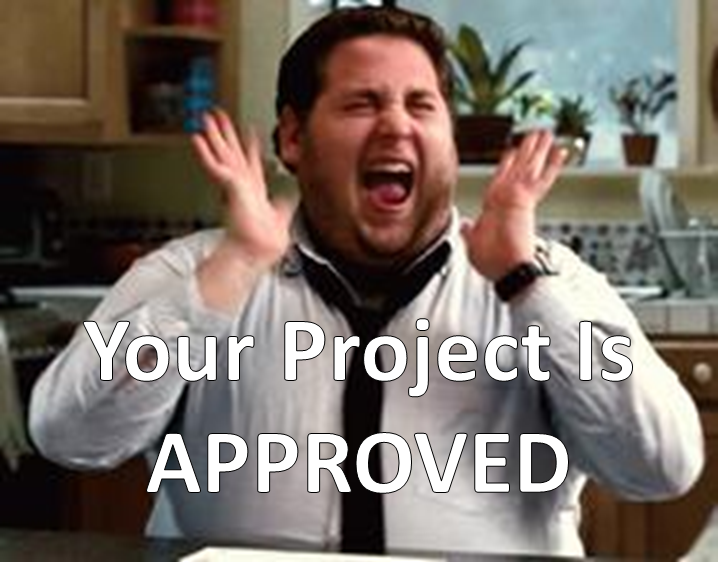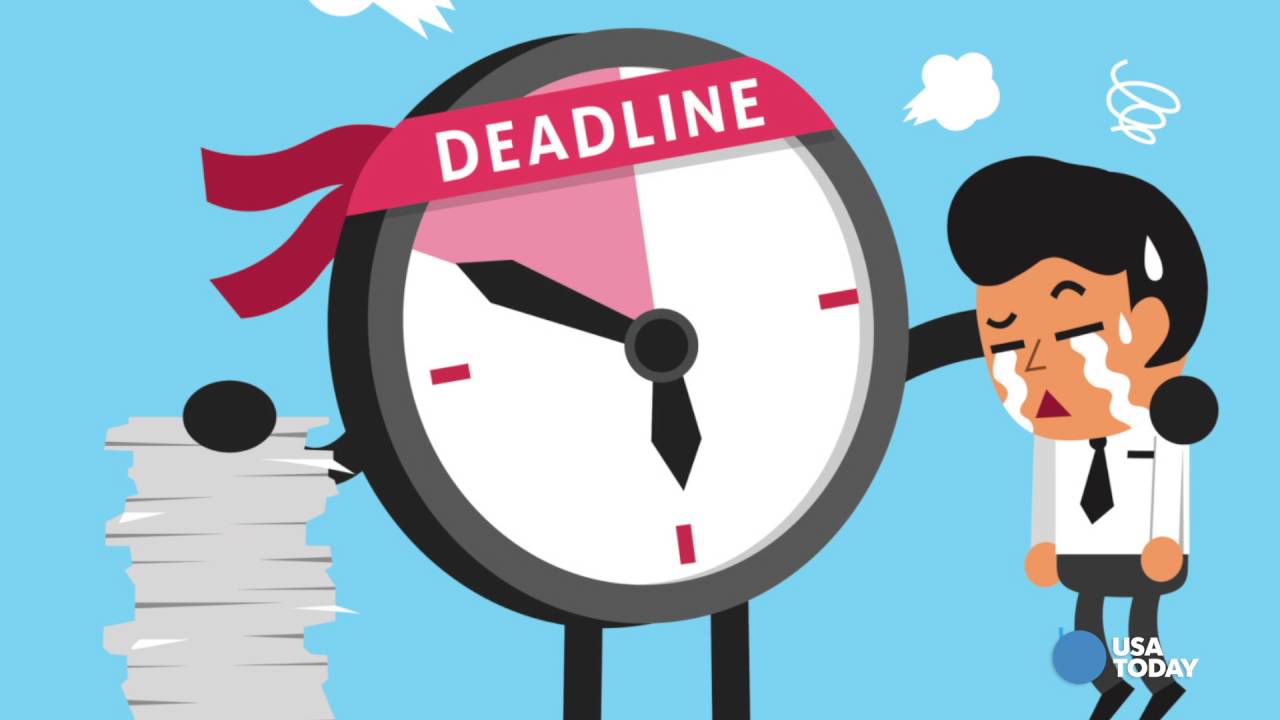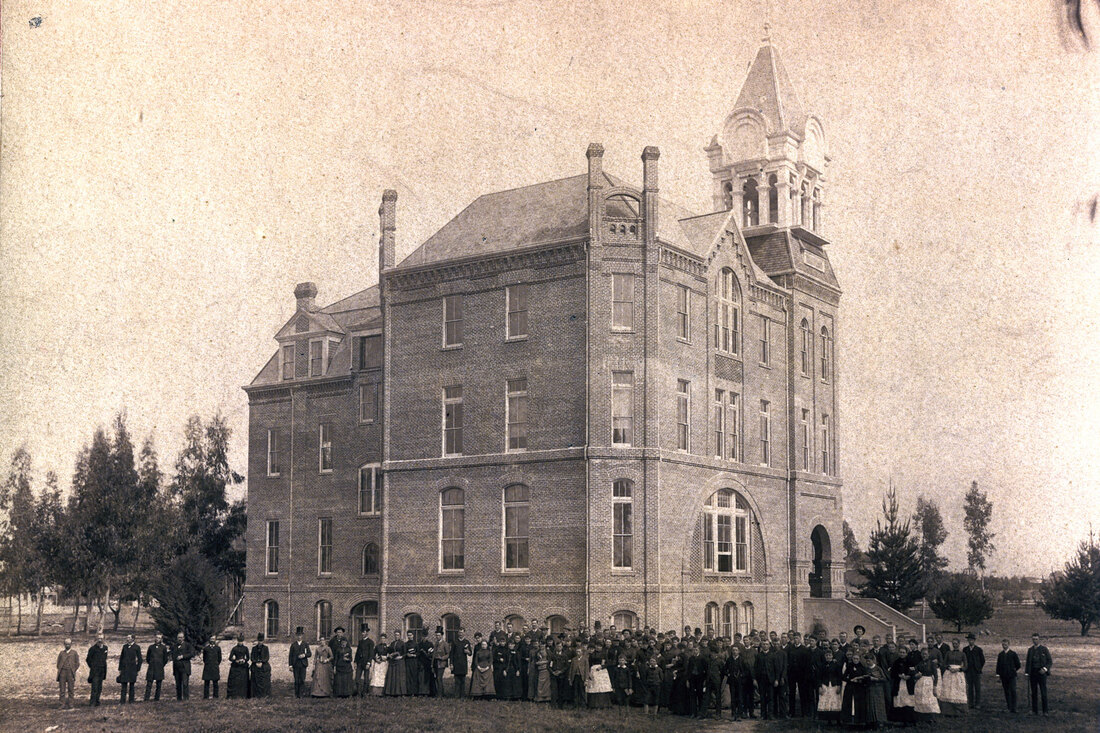|
The world around us is ever-changing and constantly evolving, and for those of us who are leading teams, projects or companies this presents a daily challenge. One area in the business world where we commonly run into change, or scope creep as many of us like to call, is in project work. It doesn’t matter if you are running an internal project, or if you are a consultant operating externally, change in work and projects alike seems constant. If you are new to the term, scope creep is defined as “changes, continuous or uncontrolled growth, in a project’s requirements, at any point after the project begins.” Simply put, it’s a change in plans that was unplanned for after the starting point of a body of work. While complete prevention of scope creep might be unreasonable, employing strategies at the forefront of your project and throughout are vital to ensure you stay on track with as little change along the way. Strategies like the ones listed below also allow the project to ebb and flow so that some change can be accommodated while other changes, which could derail a project, are held off at the proverbial gates. Below you are some strategies to help you prevent scope creep on your next project: 1. Clearly Define the Scope Up Front Have a detailed project scope statement that outlines the project's objectives, deliverables, boundaries, and limitations. Make sure all stakeholders agree on the scope before starting the project. Special note – want to get approval quickly for your project? Make sure the project and intended outcomes align with the company’s mission and primary objectives while clearly showing a good return on investment (ROI). 2. Engage Stakeholders From the Beginning Involve key stakeholders in the scope definition and planning processes. Their input and feedback can help identify potential scope creep early on and ensure that their expectations align with the project's scope. 3. Set Realistic Goals Establish achievable project goals and objectives. Unrealistic expectations can lead to scope creep as stakeholders try to add additional features or requirements. If you can’t get agreement on the goals of the project this should cause you to pause before moving forward. Remember, each person involved may have a different perspective of what is needed based on their own biases. 4. Create a Change Control Process Develop a formalized process for requesting and approving changes to the project scope. I like to use the engineering change order (ECO) process on our projects as it formalizes changes and requires approval from stakeholders before the changes are enacted. All changes should go through this process, involving the evaluation of their impact on time, cost, and resources before being accepted. Speaking of scope creep, in this episode of Medtech Snapshot Terry Vick, Sr. Director Program Management at Shockwave Medical out of Santa Clara, CA talks about some of the strategies in this list which we need to be aware of and consider upfront in the project planning phase into order to limit scope creep on the back end. Plus, the importance of having an internal project sponsor. Back to our list of strategies to help you prevent scope creep… 5. Prioritize Requirements Use techniques like MoSCoW (Must have, Should have, Could have, Won't have), Five Whys or the Analytic Hierarchy Process (AHP) to prioritize project requirements. This helps in focusing on what's essential and avoids unnecessary additions. 6. Track Progress Against Scope Regularly track project progress against the defined scope. Tools like Microsoft Project which build out real-time Gannt charts are incredibly helpful to visualize tasks and progress. This also helps identify any deviations early on and allows for timely corrective actions. 7. Communicate to Your Team Consistently & Clearly Ensuring all team members and stakeholders understand the project's scope and the implications of scope changes is paramount to the success of the project. Effective communication can help prevent misunderstandings that might lead to scope creep. 8. Document Changes to the Project Keep a detailed record of all changes to the project scope, including their rationale and impact. This documentation helps maintain transparency and accountability. 9. Manage Expectations by Providing Project Updates to Stakeholders Continuously manage stakeholder expectations by providing regular updates on project status and any changes to the scope. This can help prevent unrealistic demands and last-minute additions. 10. Institute a Review and Approval Process for Scope Change Institute a formal review and approval process for scope changes. All changes should be evaluated by relevant stakeholders and approved based on their impact. 11. Stay Firm but Flexible While it's important to resist unnecessary scope changes, be open to valid suggestions or changes that genuinely enhance the project's value. Just ensure that these changes go through the proper evaluation and approval processes. If you can’t readily identify the ROI of the change it probably isn’t a good change to consider. 12. Conduct Regular Project Reviews Conduct regular reviews with stakeholders to ensure that the project is meeting their expectations and to address any concerns before they escalate. When facilitating meetings, try to employ Jeff Bezos’ ‘Two Pizza’ rule when it comes to meeting attendees. 13. Manage Dependencies to Avoid Unintended Cross Functional Impact Understand and manage dependencies between project tasks and deliverables. Changes in one area can often impact other parts of the project. Remember that while complete prevention of scope creep might be challenging, these strategies can significantly help to reduce its occurrence and impact on your project. Regular vigilance and proactive management are key to avoiding scope creep from taking over your project. The quickest way to overcome a business challenge is to get help from those who are experienced in besting your beast! The team at Square-1 Engineering is comprised of a variety of technical and project management professionals who are subject matter experts in the areas of NPD, Quality, Compliance and Manufacturing Engineering. Learn more about how we can solve your work and project problems today to get you back on track!
0 Comments
“They gave us world class, but all we needed was the basics.”
Last week I was speaking with a VP of Quality at a small medical device company at which point he politely complained to me about a recent experience he had with a consultant their company brought onboard. The company was implementing a new online quality management system (QMS) and was utilizing this consultant to get it up and running. The VP shared with me his irritation about how the consultant came in and took on the project as an expert in the field. The consultant had done many QMS implementations prior and came with good recommendations of his work. As the conversation went on the VP share further irritation about his experience working with the consultant. He brought in an expert to do a job that was rather straight forward yet that’s not what the company got in the end. Unfortunately, the consultant failed to understand one of the most important aspects of his job – understand the needs of the customer and implement accordingly. “We’re a small company, we don’t need all the bells and whistles right now [from a QMS system]. We just need a system that keeps us in compliance while making things easier from a process flow standpoint.” The VP was sharing with me a painful experience he was having as a result of someone doing work for him and not understanding what was actually needed in the moment to be successful on that project. Sometimes what’s needed is the basics, not world class. The key is knowing when each of these is appropriate. All to often we show up to a project or work with the idea we’re going to dress up the proverbial pig ready for a fancy night out on the town. This pig of ours is going to look amazing, amazing because of the work we did to get it there. However, we end up missing the mark because we don’t bother to ask the right questions along the way. If we had bothered to ask the right questions to understand what was truly needed by the company and the key stakeholders we may find out the ‘pig’ just needs a new pair of shoes, not a whole wardrobe change. Here’s how this played out in the scenario above with my client and VP…
Here’s the rub on the situation. If the consultant had bothered to ask the vital question of their client upfront “What does ‘success’ looks like at the end of the project?” he would have found out the client needed a practical QMS which met the basic needs of their product and regulatory requirements yet did not need a lot of the fancy bells and whistles larger companies utilize with their QMS. Basically, this small medical device company needed a QMS that was straightforward, basic yet allowed them to upgrade their company to meet the regulatory requirements for their product. The client wanted a no frills, basic system yet what they got was a world class system they’ll probably never fully utilize. Key Takeaway: Don’t assume your work or project requires you to put forth world class service. Sometimes ‘good enough’ is all that’s needed. Knowing the different between ‘good enough’ and world class work outputs is a vital skill to develop and implement in your career. Action Item: Before you begin your next project at work think to yourself “what’s really needed here? The basics or something more?”. Then actually go ask the key stakeholder in charge. Doing this shows an ability to think big picture with an appreciation for what’s best for the company, not what’s best to make you look good as a result of the work you can do. Get Your Boss to Approve Your Idea12/8/2020 You’ve got an idea! Maybe it’s to optimize a process, save the company money or to develop a new product. Many of us at one point or another in our careers will come across this situation where we have a brilliant idea but we don’t know how to implement it. Once we have the idea what we do after the fact is what makes or breaks our ability to turn into reality.
The steps below can help you organize your thoughts in a formal manner so you can further vet your idea while positioning yourself (and of course your idea) for the best possible chance to get approval from the powers that be. Step #1 – Develop A Business Case A business case captures the reasoning for initiating a project or task. It is often presented in a formatted written document outlining everything from the reason for the project, problem(s) it solves and the ROI. Components of a business case document may include:
Once you’ve compiled your business case now it’s time to present it. Set a meeting with your boss, or the appropriate party who would most likely approve your idea and or project. Inform them ahead of time what the purpose of the meeting is and arrive prepared with multiple copies of your business case both to reference and present from. Leave the approver with a copy of your business case and an action item to keep them engaged and thinking about your presentation. Well look at that! You did such a good job compiling your thoughts and presenting your idea that your boss granted you approval to move forward in the project. Excelsior! Now that you have approval, which is a fancy way of saying “we like your idea enough to put money behind it”, you will need to build out the project in detail using a ‘Project Charter’ to ensure it meets a successful conclusion. Note: What’s the difference between a ‘Business Case’ and a ‘Project Charter’? A business case comes first as it is an assessment or feasibility study of an idea or task; the sponsor (person who has the idea) pitches their case to the funding stakeholders (typically your boss or people in management). If approved, a project charter is completed outlining the project in detail. The information within the charter is the constraints for which success will be measured. Step #2 – Develop a Project Charter As mentioned above, the project charter is a document which clearly defines the project scope, objectives, and participants involved. Components of a project charter may include:
You’ll note that much of the work that was done initially for the business case can in turn be used in completing the project charter. If your project is big enough it may be worth looking into project management software, like Basecamp or JIRA, to electronically track your projects activities and deliverables. Now that you’ve got your main documents guiding you through the project out of the way the next step will be to kick off the project and get underway. I recommend doing the kickoff meeting in person if possible, or via video conference call, where the team can openly talk about the needs of the project and how tasks will be divided up. All resources involved in the project should have a copy of the project charter along with clear expectations on what their role is and timeframe to deliver those tasks. Now that you have a basic foundation for what is needed to get your projects approved and kicked off the next step is to look into resources like the Project Management Institute (PMI) and their primary resource guide called Project Management Body of Knowledge (PMBOK). These resources will help you stay on track while providing vast amounts of information on how to move projects through to successful completion. Check out our Monday Quickie recap as Trisha Aure and Travis N. Smith discuss this weeks article, 'You're Doing It Wrong'; we cover ways to address miscommunication and how to ensure successful project/ work completion between employees, consultants and suppliers. To view the article: https://lnkd.in/gyFJmcE Companies which design, develop and manufacture products often times need additional support to accomplish their goals. These are the three main reasons companies use outsourced engineering service firms. When talking with a customer about their project support needs, do you use a formalized approach or do you just wing it?
Interestingly enough, I was amazed to learn recently that the vast majority of consultants (including solopreneurs) don’t utilize a formal process for collecting information when talking with a customer about a project. As I began asking more questions I learned that this was a habit across the board, regardless of the amount of years of experience the consultant has in business and or their consulting practice. The conservative side of me wanted to run for the hills hearing this. Working as a consultant offers a lot of flexibility, however within this flexibility comes lots of room for alternative view points, ambiguity and of course misinterpretation. When things are loosey goosey we open ourselves up for further opportunity for projects to fail, missing the mark or leaving one or both parties with a sour taste in their mouths at the end of the project. One of the best things I learned early in my career from a more experienced person I worked with was the importance of being disciplined in using a standardized system of help in the information gathering discussions when talking with clients. Why? Because if you don’t it’s amazing how quickly people can interpret things differently than what we had assessed, thought or even heard. What’s worse, is a simple misunderstanding up front at the beginning of a project or relationship can boil up to big issues down the road, including legal actions. For these reasons I use, and always suggest consultants use, a formal process for evaluating, qualifying or assessing project opportunities with customers. This meeting or discussion between supplier (consultant) and customer can be referred to as an ‘intake meeting’, ‘scoping a project’, ‘project qualification’ or ‘project discovery’. They’re all designed to do the same thing – ask questions to obtain information. When you’re in a discussion with a customer about their project needs you’re really trying to figure out one thing – is this the right project/ business opportunity for me to take on? The answer to that question is buried in a flurry of Q&A, best served up using a formal approach where we learn about our customers’ needs, thoughts, feelings and desires for the project and work ahead. Creating a project qualification process document (SOP) before you begin discussing projects with customers ensures you will gather all the information upfront in a consistent manner. This will also lessen the likelihood of you having to go back to ask the customer for foundational questions to better understand the project. Here’s some good questions you could use in your project qualification discussions to determine if this is the right work to take on and customer to work with:
Keep qualification discussions to no more than 30 minutes if possible. As a consultant your most precious asset is your time. All to often customers will spend time talking about things that have nothing to do with the project and or work they’re requesting your help with. Set the tone at the beginning of the discussion indicating you have 30 minutes to talk through their project needs, then moderate the discussion from there on out. Think like a consultant – not an employee. Employees have to do the work their employer asks of them, this is not true as a consultant. Your job is to listen and provide feedback. If what the customer is asking for doesn’t add up or isn’t feasible it’s your job to guide them to an alternative solution and or walk away from the opportunity. Consultants advise and perform the work as an SME. Be wary of situations where customers are asking you to perform a miracle. Projects must be grounded in reality, otherwise you may end up as the one to blame. As you wade through the project qualification discussion with your customer it’s advisable to be on the look out for the following challenges:
As you begin to formulate your approach to these discussions and questions it’s highly advisable to jot it down on paper, creating a template or checklist you can use each and every time. Should you get through the project qualification stage and both you and customer are interested in moving forward to the next stage make sure you put everything in writing that was covered during the qualification discussion. Be specific and direct. Your Statement of Work (SOW) is the backbone of your project and incredibly important in outlining expectations, performance and what happens if changes need to take place during the project. Key Take Away: As a consultant your most precious asset is your time. Use a formal and formatted approach to your project qualification discussions with your customers to ensure you collect the right information up front to better determine if the project in question is the right opportunity for you. Can you deliver the goods inline with the customers expectations? Action Item: Create a project qualification template or scoring matrix to use in your customer discussions to obtain all the information needed up front for the project. This removes all the guess work. Your template should include both exploratory questions to get your customer talking and sharing with you the in’s and out’s of the situation while also simple ‘yes’ and ‘no’ questions like “is this project approved?. Once you’ve completed the discussion with your client tell them you will get back to them after you’ve had an opportunity to digest the information you gathered. This will give you time to allow the information to sink in, time provides perspective. Sometimes a scoring matrix can be really beneficial in this situations especially if you have multiple project opportunities with multiple customers because it allows you to objectively rank each project opportunity against one another. Pick the best or most lucrative projects and say adios to the others. When was the last time your team, or company for that matter, delivered a project or product on time? Sounds like an easy and obvious question to answer however the reality would surprise you. Failure to deliver the goods, on time and to expectation, happens much more than most of us realize. In fact, we’ve become accustom to our expectations not being met, so much so that we barely even notice it anymore. UPS and FedEx are heralded as two of the best shipping and freight companies globally. The two combined do more than 24 million daily shipments on average. That’s a lot of Amazon orders. Did you know that a combined 19% of those packages don’t make it to their designation on time, or at all? That’s 4.5 million packages miss the mark, EVERY DAY! You may be thinking, “Why should I care about what happens at FedEx, after all I don’t work there.” Missing deadlines, or delivering the proverbial goods late, is more than just a shipping issue, it’s a global business issue and frankly it’s very bad for business. When we miss deadlines, or customer expectations for that matter, we experience all sorts of negative exposure, including:
When UPS or FedEx misses a delivery or puts a package back in que which should have already been delivered the ripple effect created for that driver and route can impact an entire days’ worth of work, or more.
Same thing can be said for our customers. We got a call two weeks ago from a customer asking for help on a project of theirs which had already missed its deadline. Our customer, was two weeks past due on their product delivery date for their respective customer. Needless to say their customer was less then enthused. In fact, every day they fell behind in shipping their product they lost 11k USD in billable revenue. With costs surmounting quickly eating into their profit margin their customer also became wary of their ability to execute as they had hoped and expected. Phone calls between the two companies became increasingly frequent with the client becoming increasingly upset. Threats of the white-collar kind became a start to each call. Not a good position to be in. [thanks Captain Obvious] Our customer asked us to bring a team in and offload some of their work, mostly protocol and process related, so they could focus all their efforts in satisfying the commitment they made to their customer. Our team was to alleviate the bottleneck of work they were experiencing so other internal projects wouldn’t keep backing up as they had already begun to do. Once the bottleneck begins its incredibly challenging to get out of that rhythm and back on track without extra help. These types of moments are highly intense and stressful. One of the things our customer did with their end customer, which I found to be of high integrity and good professionalism, is they painstakingly told their customer what had happened to make them fall behind, apologized and took ownership for the failure to deliver and immediately shared with the customer their course of action to solve the problem. While their customer was rather upset along the way they did acknowledge the apology and things seemed to get underway shortly thereafter. The product ultimately was delivered 3 ½ weeks late of schedule costing our customer close to quarter of a million dollars in missed revenue. Tough lesson to learn on the importance of hitting deadlines and meeting expectations. Key Take Away: A wise person once said, “sh** happens”. A profound statement to say the least yet certainly true. Sometimes things do happen that are out of our control, taking ownership of the situation and asking for help can be the best two decisions we can make in these moments. Action Item: Don’t decide to ask for help when you’re already in hot water. If you’re watching your project timelines begin to slip immediately put in a plan of attack to lean on your suppliers for help. If your relationship with your customer is on good footing still you can try to proactively ask for an extension on the delivery date with the hopes that will provide some cushion to get work done on time. Note – don’t get in the habit of asking for deadline extensions. Once is fine, but to ask that of a customer often signals your company is unorganized and lacks leadership to meet it’s obligations. In need of someone to help you climb out of your project bottlenecks? Contact Square-1 Engineering at www.square1engineering.com to learn how we can help your solve your biggest engineering and technical business challenges. Your company is booming. Work is plentiful. Everyone is up to their eye balls in a flurry of activity. As your company works through each project you inevitably get hit with an unexpected curve ball that pauses your momentum, causing you to go off track. We’ve all been there and for some of us this is a daily, if not weekly, occurrence in our business. Learning how to deal with the unexpected and therefore being audible ready with a problem solving mentality very well may be one of the most important characteristics an employees can have. Yet, what do you do when your skills are maxed out and you don’t know how to solve the problem or get the project back on track? (note – the answer is not to turn to Google) Call your local Subject Matter Expert! (SME) John Reh of Balance Careers put it perfectly, “A subject matter expert in business is an individual with a deep understanding of a particular process, function, technology, machine, material or type of equipment. Individuals designated as subject matter experts are typically sought out by others interested in learning more about or leveraging their unique expertise to solve specific problems or help meet particular technical challenges.” It’s a mouthful, but 100% accurate. I experienced a situation last year where we had an opportunity to support a customer on a short term, one off project, where we were being brought in to provide guidance on product packaging and manufacturing sterilization methods. While we’ve done this kind of work plenty of times before I was initially concerned that this project would inevitably be different because this customers technology is by far one of the most complicated we’ve had the opportunity to work on. That said, it’s one of the reasons we love working with this customer. As the project came closer to deploying I realized our traditional approach to projects of this nature wouldn’t get us across the finish line, and or within the time frame we needed to in order to meet our deliverables. After making a couple phone calls we were able to get connected with a medical device industry expert in class III sterilization. Five minutes into the conversation with this guy, who we’ll refer to moving forward as Benji, it was crystal clear that Benji’s skills were far and above the average manufacturing engineer in our business. So much so that he unfolded a myriad of considerations in approaching a project of this nature, of which only half of them had already been considered by my team and the client. Needless to say I was beside myself with Benji’s expertise and understanding of sterilization processes and their requirements when it came to product packaging. It’s one thing to understand a concept, it’s an entirely different thing to be able to understand something so innately that you can apply that knowledge to myriad of applications, and do so in a timely, accurate manner. The cherry on the top here is being able to apply this knowledge in situations where there is no precedent to work from, in our situation working with cutting edge technology. As the project got underway Benji quickly took command of the project, assessed the current state of the product, it’s manufacturing processes and requirements for proper sterilization. He met with a slew of suppliers, performed material characterization studies and tested several processes in an elaborate and highly systematic process. The end result? We, thanks to the help of our Superhero SME Benji, successfully identified a sterilization process which both met our customers needs and did so in a way that exceeded their product packaging and manufacturing requirements. Best part, this was all accomplished 2 weeks before the project deadline! I look back on this project and sometimes wonder what would have happened if we had gone the typical route and project deployment for this type of work? Would we have finished on time? Would we have met the customers expectations? If I had to guess, probably not. As a result, our choice to bring in a Subject Matter Expert (SME) to handle the work for us and guide us to the promise land was by and large the best choice we could have made. A choice that benefited both our company and certainly our customer. Key Take Away:
Don’t try to do everything yourself. Sometimes the best answer is to lean on an expert who’s experience in a particular area is light years beyond your own. This is a good time for us to set aside our egos and ask for help from people who are capable of getting us the solution we need while teaching us along the way. It’s worth every penny! Action Item: Don’t wait until you need an SME to begin looking for one. Start reaching out to industry associations, your personal connections or your suppliers to build a pool of people who have expertise in specific areas your business are involved in. Keep track of these people in a contact management tool or at a minimum Excel spreadsheet which provides detail on each SME’s capabilities, hourly rate or cost, location, typical availability, etc. Next time a challenge comes up you can’t readily answer yourself you’ll now have an ‘SME hot list’ of people you can access immediately to solve your business and project challenges. In need of an SME? Contact Square-1 Engineering at www.square1engineering.com to learn how we can help your solve your biggest engineering and technical business challenges. About the AuthorTravis Smith is the founder and managing director of Square-1 Engineering, a medical device consulting firm, providing end to end engineering and compliance services. He successfully served the life sciences marketplace in SoCal for over 15 years and has been recognized as a ‘40 Under 40’ honoree by the Greater Irvine Chamber of Commerce as a top leader in Orange County, CA. Categories
All
Archives
April 2024
|
Visit Square-1's
|
|










 RSS Feed
RSS Feed


